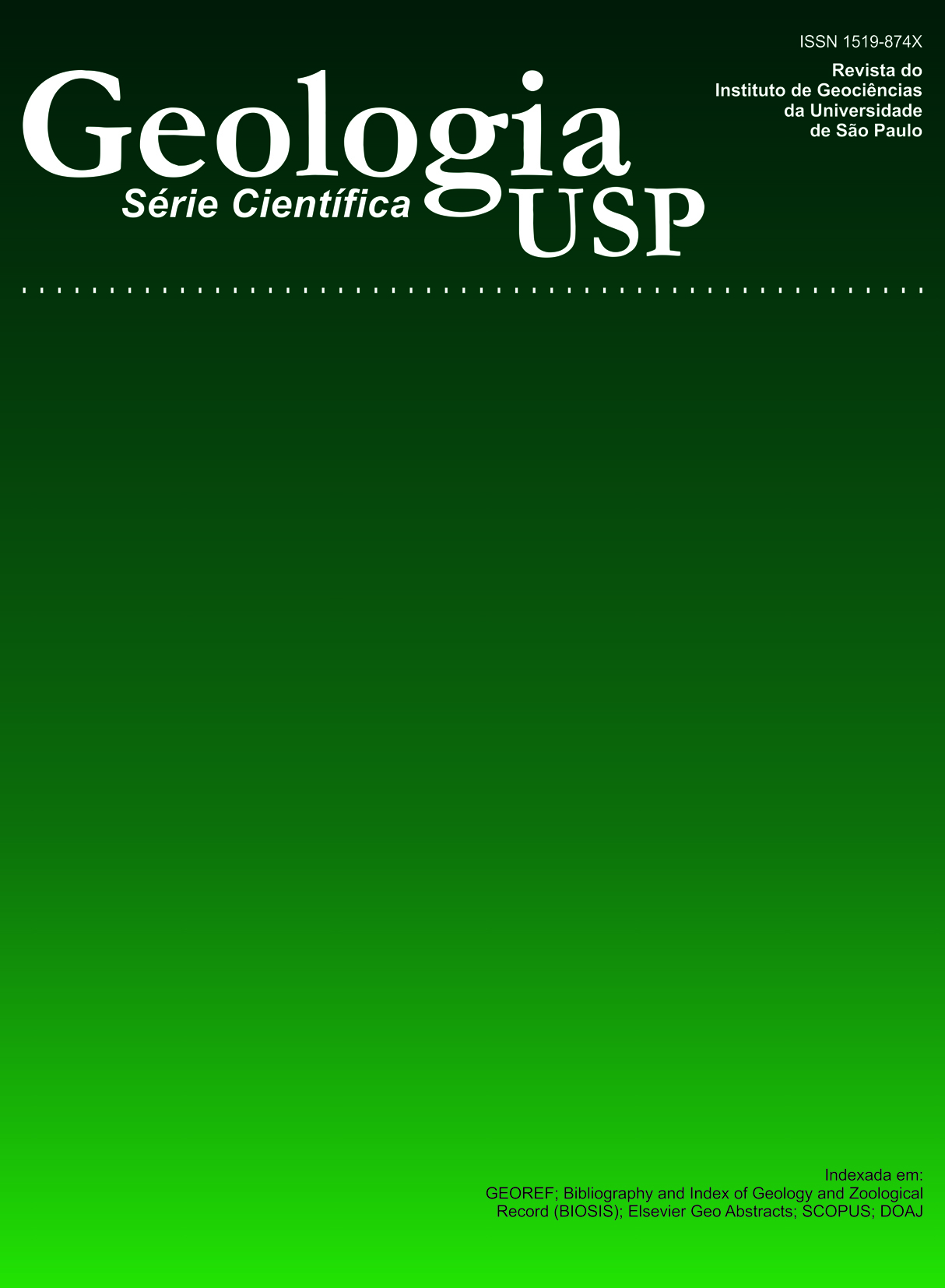Ordinary Co-kriging versus Kriging with External Drift Correction: Applications to the Evaluation of the Potentiometric Level of a Free Aquifer
DOI:
https://doi.org/10.5327/Z1519-874X2009000100005Keywords:
Multivariate geostatistics, Cokriging, External drift kriging, Smoothing effect, Potenciometric map, HydrogeologyAbstract
Equipotential maps are obtained from monitoring wells distributed over the study area. These maps can be built using several interpolation methods, nevertheless the available potentiometric information is not sufficient to ensure good estimation for unsampled locations. In these cases one can use more complex interpolators such as normal cokriging and external drift kriging, with and without correction of the smoothing effect. These methods consider not only the variable to be estimated but also another correlated variable. Thus, we can use information coming from a secondary source to estimate the main variable. For instance, elevation is well correlated with potentiometric data and it is very easy to acquire over the study area. In this paper cokriging, kriging with external drift, and kriging with external drift after correcting the smoothing effect have been used for the preparation of the potentiometric map of a free aquifer in the NE part of Fortaleza City, Ceará State. Among the three tested methods cokriging gave the worst results because of the instability of the system of cokriging equations. Kriging with an external drift seems to be appropriate since it is simpler to implement than cokriging, and it depends on correlation of the secondary information with the variable to be estimated. Furthermore, kriging with external drift after correcting the smoothing effect did not improve the results because available information is not uniformly distributed over the study area. Actually, errors coming from portions with few data are scattered out over other better sampled portions resulting in poorer estimates.Downloads
Download data is not yet available.
Downloads
Published
2009-01-01
Issue
Section
Articles
License
Authors who publish in this journal shall comply with the following terms:
- Authors keep their copyright and grant to Geologia USP: Série Científica the right of first publication, with the paper under the Creative Commons BY-NC-SA license (summary of the license: https://creativecommons.org/licenses/by-nc-sa/4.0 | full text of the license: https://creativecommons.org/licenses/by-nc-sa/4.0/legalcode) that allows the non-commercial sharing of the paper and granting the proper copyrights of the first publication in this journal.
- Authors are authorized to take additional contracts separately, for non-exclusive distribution of the version of the paper published in this journal (publish in institutional repository or as a book chapter), granting the proper copyrights of first publication in this journal.
- Authors are allowed and encouraged to publish and distribute their paper online (in institutional repositories or their personal page) at any point before or during the editorial process, since this can generate productive changes as well as increase the impact and citation of the published paper (See The effect of Open Access and downloads on citation impact).
How to Cite
Rocha, M. M. da, Yamamoto, J. K., & Fonteles, H. R. da N. (2009). Ordinary Co-kriging versus Kriging with External Drift Correction: Applications to the Evaluation of the Potentiometric Level of a Free Aquifer . Geologia USP. Série Científica, 9(1), 73-84. https://doi.org/10.5327/Z1519-874X2009000100005





